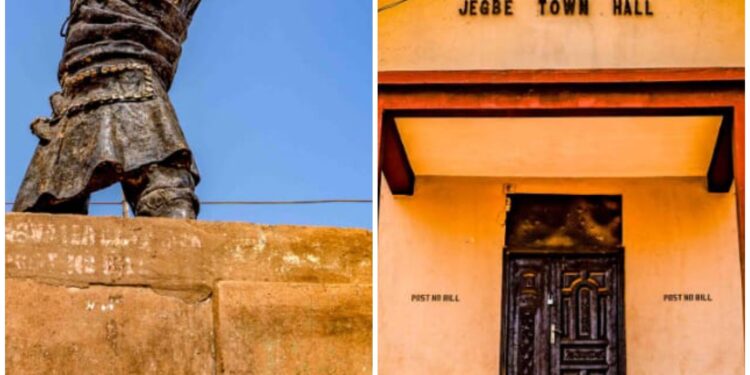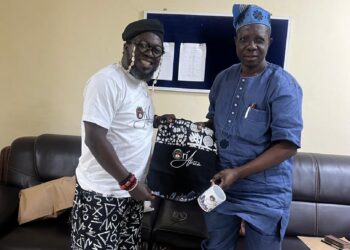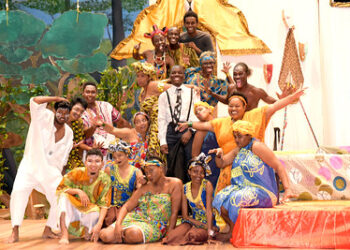History of Ìkòyí series 2
By the virtue of Oníkòyí’s position as one of the Provincial governors within Oyo Empire, he was accorded with great honour as a warrior by the Obas and Baales. He was regarded as the warlord, the defender of the Alaafin and the Yoruba Empire at large.

Onikoyi occupied a topmost military position of commander of a top brigade of the imperial guard known as Eso; hence he is eulogised with this panegyric:
Èsó Ìkòyí omo Agbòmonà
Èsó ko riku sá
Èsó ki gbofà léyìn
lwaju ni yanbí olu tii gb’ota
Èsó ti o ba gbofa leyin a jé p’ósagun ni.
As a matter of historical fact, throughout the 18th century, Yorubaland was politically and economically stable. In the northern and western parts, Oyo controlled an empire that included other non Yoruba speaking people. Other Yoruba kingdoms in the South and East were stable and reasonably prosperous.
In 1793, for historical reasons that the author cannot go into here, political problems started within the metropolitan care of the mighty Oyo Empire. However, around 1826, two years after the Fulani Muslim rulers had taken over Ilorin, the Yoruba rulers woke up from their slumbers, to behold the dire consequences of what Samuel Johnson called their “shortsightedness”, “act of treachery” and “selfishness” since 1795. They therefore, convened a meeting at Ìkòyí.
What then was the significance of chosen ìkoyí as the venue of the congress? A plausible explanation is that, in the century of wars, Ikoyi assumed increasing importance in Yoruba politics and Onikoyi was consulted on all issues of war and peace. From the foregoing, one may assert with reasonable degree of confidence that, the history of ikoyi in the 19th Gentury was essentially a military history. Onikoyi was for a greater part of the century, fighting a defensive war, being the Baba Ogun, the defender of the Alaafin and the Yoruba Empire at large. He was deeply concerned about how peace wouild reign in Yorubaland. In another perspective, chosen ìkòyí as the venue of the meeting might be a mark of respect for the office of Onikoyi, the commander of a top brigade of the imperial guard known as Eso.
The popular Ikoyí congress of 1826 was summoned by Alaafin Majotu. The congress was specifically aimed at reconcilling feuding Yoruba chiefs, protecting the territorial integrity of Yorubaland and taking a united action against Fulani imperialism.
The 1826 conference did not achieve the immediate cessation of hostilities among the Yoruba. But from then on, the desire to protect individual lives, freedom and the territorial integrity of Yorubaland was never lost sight. Because they could not achieve their laudable objectives, so each group sought to achieve them in its own way. Nevertheless, each Yoruba kingdom, guarded its own freedom very jealously. In the process, various Yoruba groups had conflicts with one another, leading to more civil wars, greater misery and alienation of each other.
In fact, there was a struggle for supremacy between Toyéje of Ogbomoso, the Are-OnaKakanfo (after Afonja’s death) and Adégun, the Onikoyi of ikoyi. The rivalry between the duo culminated in the Pamo war of 1828. Since the collapse of Qyo authority, these provincial chiefs became rivals. In fact, in order to diminish the influence and power of Toyeje, the Onikoyi created another Kakanfo – in the person of Edun of Gbógun.
Below is the list of Onikoyi of the past:
Jegbe Adé
Olubesin Adéjegbe
Olugbayi Ajibesin
Ajigayi Olatunji lyanda
Oludepo Ariori Oyo
Olugbade
Olugbode Amado
Owoadé Ajado
Olugboye Alade
Olugbinré Ajalaku
Adégun 1
Ojo Atoyebi.
You can get every of our news as soon as they drop on WhatsApp ...To get all news updates, Join our WhatsApp Group (Click Here)












